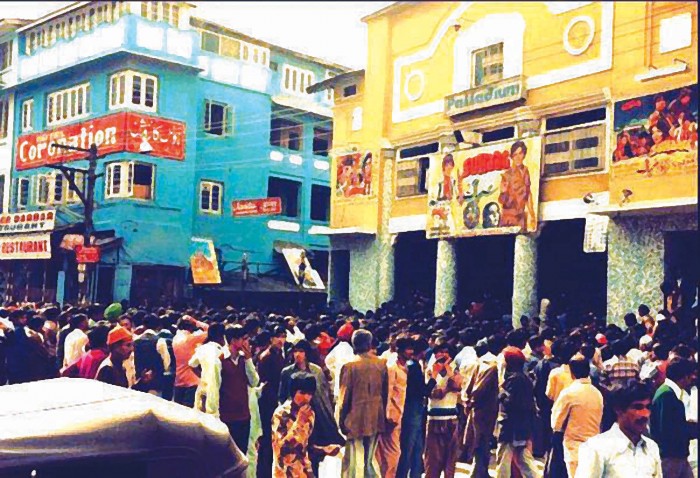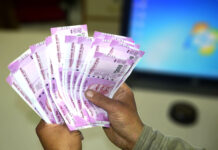Banks are the new money shops. They sell products and make money. But it is not always that they earn. They lose too. Syed Asma talks to bankers and the defaulters to understand the how assets get bad at micro level

The gun shots were heard around. Everyone was taken aback. It wasn’t any encounter site but a three star, well reputed hotel. After confusion and chaos it came forth that the proprietor is a defaulter for Rs 6 crore with a bank and it was a recovery team which was shot at. What happened inside the room has many versions but since then the employees going for recovery were asked to be cautious.
“We don’t only take cash over the counter,” says a bank employee with laughter, “but we face bullets as well!”
Different nationalised, public and private banks are operating in Kashmir and in the last decade all have shown significant growth. J&K Bank leading the list has shown an upward trend in the advances and the Credit Deposit Ratio (CDR). But the list which is growing as well, perhaps at the same pace, is that of loan defaulters.
Six years ago, a resident from old city thought of starting a fleshy fruit unit in one of the industrial estates of the Valley. He got it approved through Directorate of Commerce (DIC) and the case was forwarded to the SBI. Upon inspection, the proposed loan amount was found in excess of the actual requirement. The proposal was returned. DIC reassessed the case and revised the proposal reducing the amount considerably. Finally the loan of around Rs 25 Lakh was sanctioned.The proprietor kept the loan accounts functioning by paying just the minimal sum. “To avail all the benefits and subsidies related to the Cash Credit (CC) account, the proprietor had to keep his account functional smoothly,” explains a banker handling Non Performing Assets (NPAs) in SBI, “His account witnessed consistent transactions but there was no real business underlying the financial transactions.”
After a few months when he approached the bank for the government subsidy, the bank out rightly rejected it. Reason: The unit had not run satisfactorily to warrant an interest subsidy. Since then he stopped paying even the minimal amount and the account turned NPA. The unit is closed since.
The defaulter alleges that loan advanced to him was insufficient and the unit was underfinanced; even as the assessment was done by DIC. “Having strong political connections, he is still a headache for us despite being a wilful defaulter,” the banker adds.
The data available in public domain shows that for the past two years Jammu region has produced more defaulters than the Kashmir region. In 2014, the Gross NPA for Poonch was the highest with 11.71 percent and in 2015 Jammu again had a lead with 9.52 percent.
While as in 2014 the lowest gross NPA was for Shopian with 1.31 percent and in 2015 it was for Leh with 1.19 percent.
Another case of an ‘aspiring entrepreneur’ who duped a bank belongs to south Kashmir. Some seven years back a loan of Rs 4.29 crore was advanced to the entrepreneur who purportedly wanted to set up a unit of PET Bottles and packing of mineral and edible oils. The account turned NPA two years after the loan was sanctioned. After repeated pleas for repaying, the bank smelled a rat in his set-up and lodged an FIR. The case went to CBI.
The investigations revealed that the proprietor had submitted false and fabricated bills to the bank while showing the purchase of machineries and raw material for availing the due benefits. The case is in the civil court right now.
The frauds, scams and NPA stories do not end with a single bank and almost all banks have their ordeals.
J&K Bank, which is the leading bank in terms of deposits and advances in the Valley, too loses money to its defaulters.
“Most of our NPAs are of government sponsored schemes,” says a senior banker. Explaining further she adds, “People think the schemes are sponsored by the government so there is no need to repay the sum. But they need to understand it is all public money which on the government directions revolves in the public. And the whole process is done through banks. Bank is not distributing its assets. They actually swindle public money and not the government money.”
Apart from weak laws that do not take the defaulters to the task, there are some schemes which even do not ask for any guarantor or any mortgage. Though the schemes are for encouraging small entrepreneur units but the people tend to exploit and misuse them!
Four years ago a scheme called Artisan Credit Card (ACC) got a fillip in J&K when the J&K Bank was also included in the list of banks that could avail interest subvention scheme inherent in ACC. Under this scheme Rs 90,000 are distributed among the artisans who desire to seek help and improve on their small handicraft units. But the bankers say most of them turn out to be defaulters.
Saja from Srinagar city outskirts had applied for a similar loan. The government handicraft department issued a job card in her favour, which is the only requirement for availing of the ACC loan. The concerned bank branch approved the loan and the first instalment of Rs 50,000 was released. For issuing rest of the amount, a mandatory inspection from the bank revealed that the loan was being apparently used for good.
“When I visited her workshop, which actually was her home, I saw a couple of women and girls doing chain stitching,” says a member of the inspection team, “what my eyes saw was satisfactory, so I gave a report and the second instalment was released.”
But it has been two years since then; Saja has not repaid a single penny and does not even respond to the recovery calls from the bank.
“You can’t imagine how they behave when we go for recovery, even women get violent. They know we won’t hit women,” the recovery team member of the bank explains.
The normal trend shows that people misuse the ACCs and instead of spending on their handicraft units use the amount in renovating their houses and arranging their marriages. Arbitrarily, about 30 percent of the total NPA goes into such schemes.
Similarly, other schemes like Self-Employment Scheme (SES) too have been exploited on similar grounds.
“NPA usually happens when there is diversion of funds,” says a banker, “and the exploitation happens either through schemes or by the big shots.”
Some of the government schemes are exploited because they don’t ask for guarantees but the loans asking mortgages involve big shots. They do not even bother if some of their property remains with the bank.
Seconding the statement, a banker puts forward a case. A well-established business house once applied for a loan of Rs 22 lakh and kept 10 kanals of land mortgage with the bank. It has been five years and he has not paid a single penny. Besides, he purchased a property in Pahalgam worth crores.
“What loss would it be for him, if the banks don’t return 10 kanals,” the banker opines. “Nothing!” he answers himself, “he should be severely punished so that others would get a lesson.”














